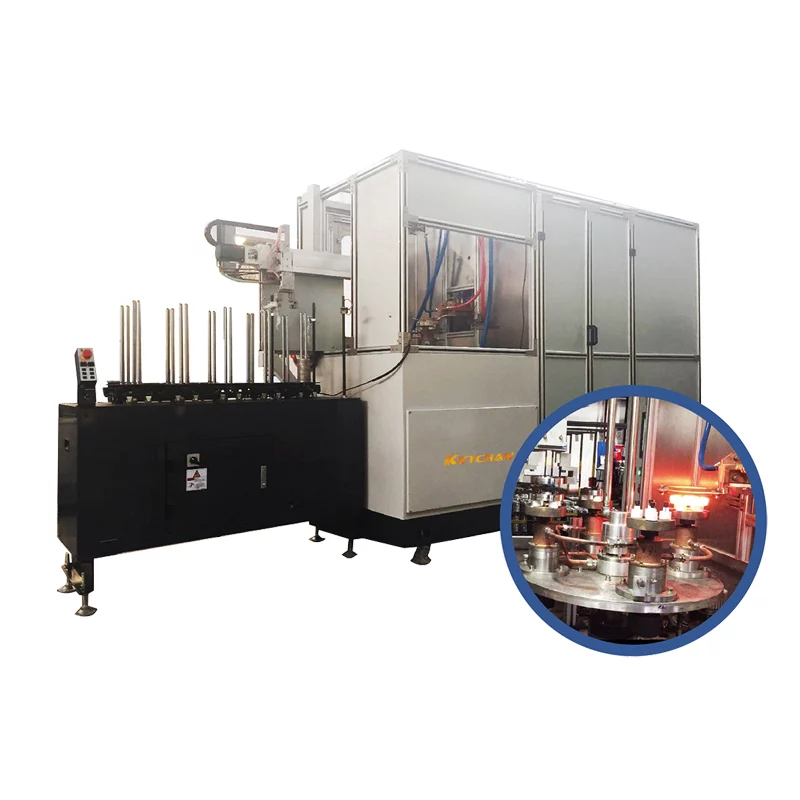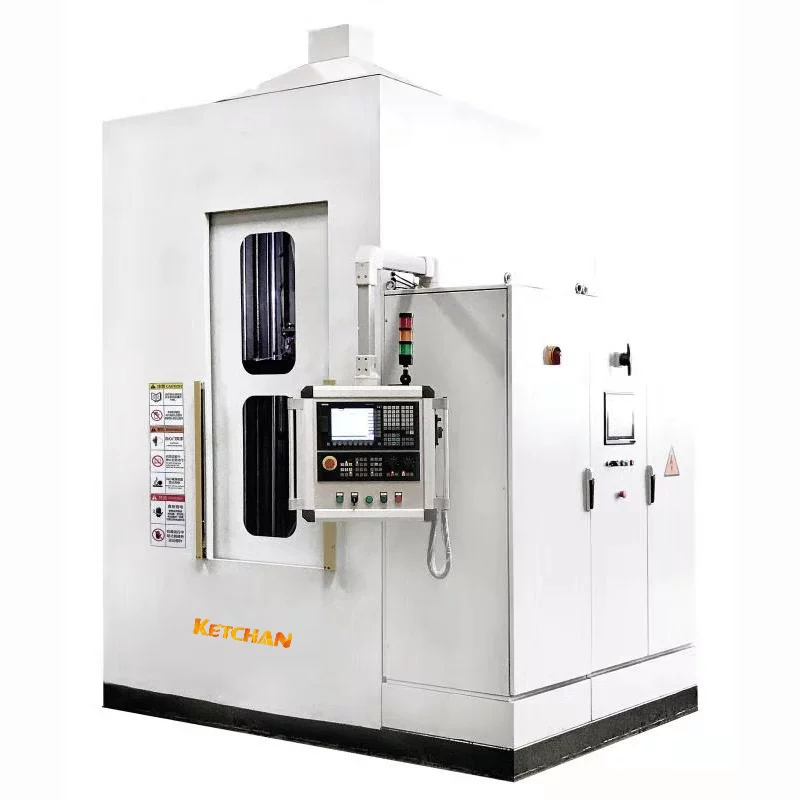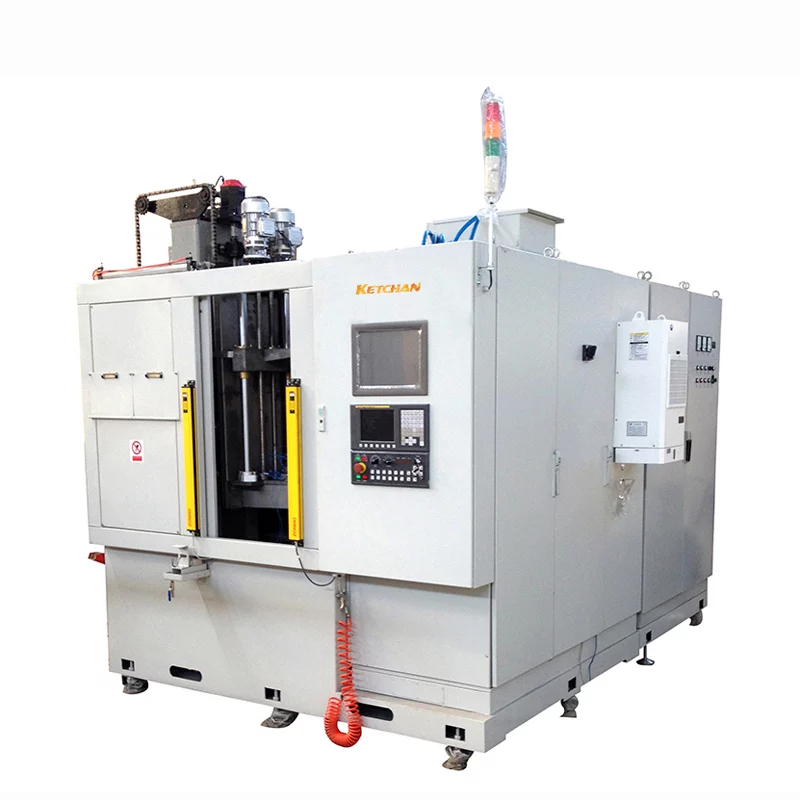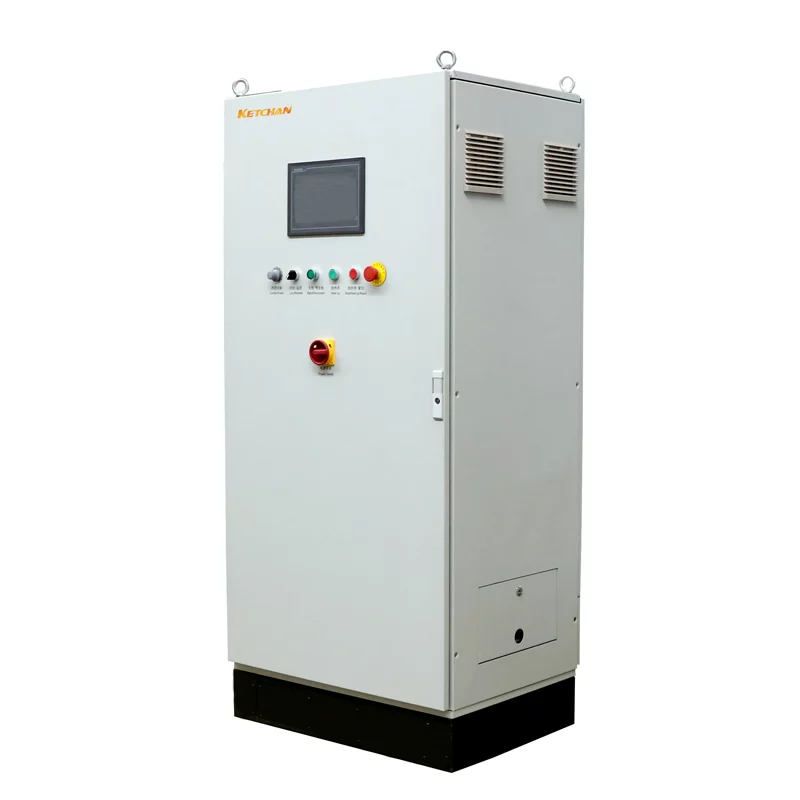Abstract:
This paper briefly introduces the induction hardening of automobile brake camshaft. The brake camshaft is an important component of automobile brake parts, and its surface is required to have high hardness and wear resistance, and at the same time, the core must have certain toughness. To meet high fatigue strength requirements. In order to meet these requirements, a comprehensive design has been carried out in terms of inductor structure, induction heating power supply parameters, heating methods, and cooling methods. The results show that this induction quenching process completely meets the requirements of the camshaft quenching process.
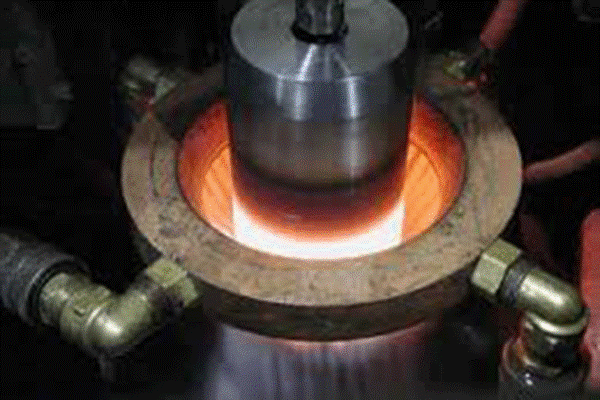
Induction Quenching Process Requirements Overview:
The material of the brake camshaft used in the experiment is 45 steel, the shaft diameter is 40mm, the quenching technical requirements are the surface hardness of 52~63HRC, the depth of the hardened layer of the shaft is 2~3.5mm, and the depth of the hardened layer of the peach tip is less than 10mm.
As shown in Figure 1, the automobile brake camshaft is mainly composed of a core part, a shaft part and a spline, of which the core part and the spline are profile quenched, and there are special requirements for the quenching process.
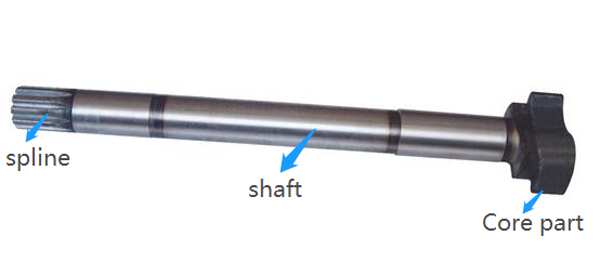
Induction hardening power supply and CNC machine tool selection:
- For the selection of induction heating power supply, two parameters need to be determined: heating frequency and power.
- The depth of the hardened layer is mainly affected by the heating frequency, power density, and cooling rate, among which the heating frequency is the main factor affecting the layer depth. According to the requirements of the camshaft layer depth, the heating frequency can be selected from 15~25KHZ by formula calculation. When the heating frequency is high, the penetration depth is shallow, the energy is more concentrated, and the heating efficiency is also high. Therefore, when meeting the layer depth requirements, the frequency should be selected as high as possible, so the heating frequency should be 25KHZ.
- The power of the equipment can be calculated according to the size of the workpiece and the power density. After calculation, an 80KW intermediate frequency heating power supply should be selected, and the heating frequency is 25KHZ. The heating equipment used in the test is ZHENGZHOU KETCHAN medium frequency induction heating power supply 80/100, the heating effect is stable, and the test results are good.
- The CNC quenching machine tool is a shaft-type vertical quenching machine with a stroke of 600mm.
Induction hardening coil structure design:
The shaft part adopts a single-circle ring induction hardening coil with an auxiliary water spray ring; the core part adopts a copy-shaped single-circle induction hardening coil with an auxiliary water sprayer, as shown in Figure 2. The quenching method adopts the continuous heating scanning quenching method. The shaft and the peach core are quenched openly. When the shaft is quenched, the camshaft moves up and down and rotates at the same time, which can make heating and cool more uniform.
Induction hardening process:
The quenching and cooling method of the camshaft is a spray cooling method, and the workpiece is partially cooled by the auxiliary water spray ring to complete the transformation of the martensite structure. There is often a large internal stress inside the quenched workpiece, which is not conducive to the performance of the workpiece. After quenching, the workpiece needs to be tempered to achieve the purpose of eliminating internal stress; in addition, there is another tempering method. , When cooling the workpiece, let the workpiece still have a certain residual temperature after cooling, and the temperature is controlled at 200-300 ℃, so that the workpiece can use its own residual temperature to self-temper to eliminate stress. The temperature after cooling can be adjusted by changing the flow rate of the quenching medium or the concentration of the cooling medium. The quenching medium is PAG-based aqueous solution, sencro-p75 quenching medium, the concentration is 11%, the operating temperature is 10-50 ℃, the pH value is 9-11, and the cooling capacity decreases with the increase of the concentration.
Induction hardening advantages:
Compared with other surface heat treatment methods, such as surface carburizing, surface nitriding, carbonitriding, etc., induction heating quenching is more environmentally friendly, efficient, and economical. And it is suitable for continuous mass production.
Tags:brake camshaft hardening, brake shaft quenching, camshaft hardening, camshaft induction hardening, camshaft induction hardening process, high frequency hardening machine, induction hardened crankshaft, induction hardened cylinder rod, induction hardening coil, induction hardening crankshaft, induction hardening equipment, induction hardening machine for sale, induction hardening system, induction heat treating camshaft, induction heat treating crankshaft, induction quenching camshaft, shaft induction hardening, vertical induction hardening machine
Relate Products
-
CNC Hardening System
Induction Hardening Tempering Scanner
-
CNC Hardening System
Shaft CNC Hardening Machine Tool
-
CNC Hardening System
Vertical CNC Hardening Machine Tool
-
Induction Heat Treatment system
Crankshaft Induction Hardening Machine
-
Induction Heat Treatment system
Shaft Induction Hardening Machine
-
Induction Heat Treatment system
Induction Hardening Machine

